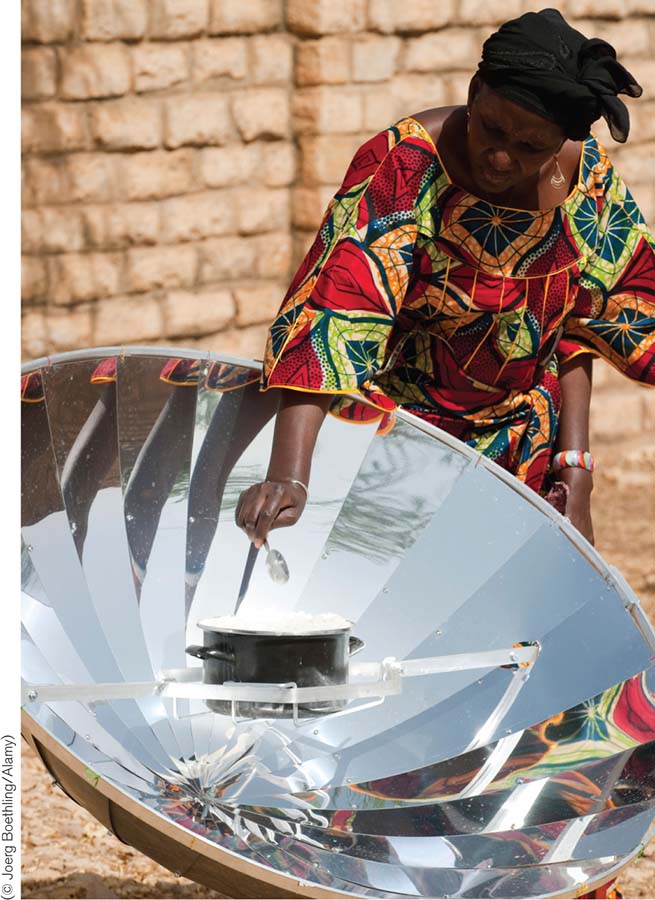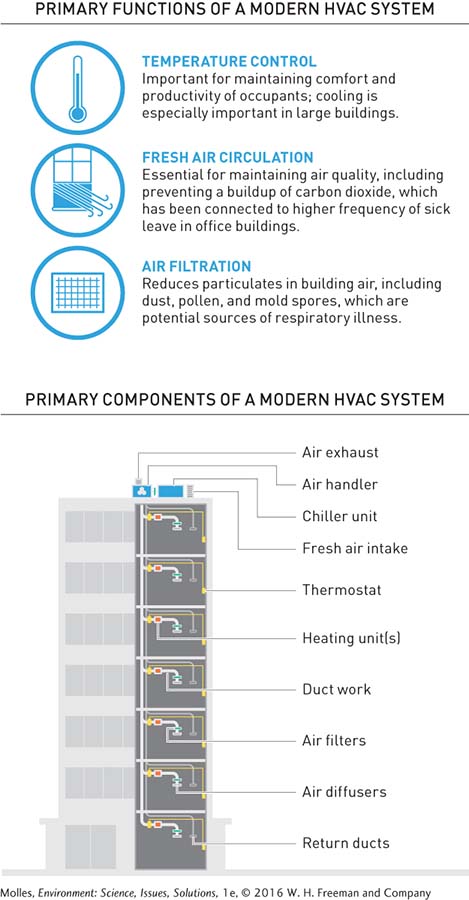13.10 New technologies can reduce indoor air pollution
Indoor air pollution remains as much or more of a threat to human health as outdoor air pollution. According to the World Health Organization (WHO), more people die every year from indoor air pollution than from outdoor air pollution. The good news, though, is that we have the technological know-how to solve the problem, as long as governments, companies, and humanitarian organizations work toward that end.
Healthier Cooking Technologies
Living in a smoke-filled house isn’t pleasant, nor is it healthy. One of the most beneficial improvements to environmental health came with the invention of ways to ventilate homes. The first approach was likely a simple hole in the ceiling of a hut or teepee. A further reduction in indoor air pollution was achieved with the invention of the chimney attached to a fireplace or stove.
In developing countries, such as India and Bangladesh, where the problem of indoor air pollution is most severe, the health of local populations could be greatly improved with a few relatively low-tech solutions. One of the simplest ways to reduce exposure to smoke from cooking and heating fires is to thoroughly dry fuels, such as wood or animal dung, before use. Another simple solution is to provide improved stoves that use less fuel for cooking, reduce cooking time, and, in the process, reduce the amount of smoke generated. Combining better stove design with effective chimneys or hoods for collecting and venting smoke can reduce indoor pollution still further.
Other approaches involve switching from dung, wood, and coal to cleaner fuels, such as liquid petroleum gas, biogas generated from dung, or electricity. Solar cookers have also been developed that can be used in areas with abundant sunlight (Figure 13.36). Governments and nongovernmental organizations are working very hard to bring some of these solutions to bear in the regions where health is most significantly impacted by indoor air pollution.
SOLAR ENERGY AS AN ALTERNATIVE TO BIOMASS BURNING

FIGURE 13.36 Solar cooking technology is being developed to help relieve the widespread problem of indoor air pollution in developing countries. Here, a woman in West Africa prepares food using a solar cooker.
(© Joerg Boethling/Alamy)
Reducing Indoor Air Pollution in Modern Buildings
Modern buildings have a different set of indoor pollutants, for example, volatile organic compounds (VOCs). The most direct way to prevent the buildup of pollutants in the indoor environment is to maintain adequate ventilation rates by ensuring that the heating, ventilating, and air conditioning (HVAC) system meets industry standards (Figure 13.37). The HVAC system needs to be serviced routinely and air filters must be cleaned or replaced at prescribed intervals. A proactive approach, increasingly used in so-called green architecture, is to reduce the use of building materials or furnishings that are a significant source of hazardous pollutants. Any potential sources of pollutants should be stored away from work areas and vented to the outside. Perhaps most importantly, building occupants and managers need to communicate freely and be informed of building operations and potential air-quality issues.
MAINTAINING INDOOR AIR QUALITY IN LARGE MODERN BUILDINGS

FIGURE 13.37 Large modern buildings maintain the quality of the indoor environment using complex mechanical heating, ventilating, and air conditioning (HVAC) systems.
Think About It
What is the major impediment to fixing the indoor pollution problem in the most affected populations?
Why does indoor pollution take a larger toll on human health than outdoor pollution?

